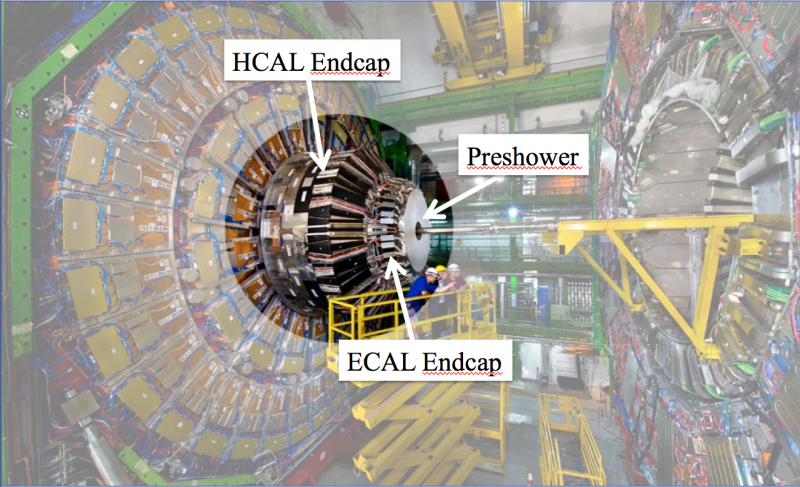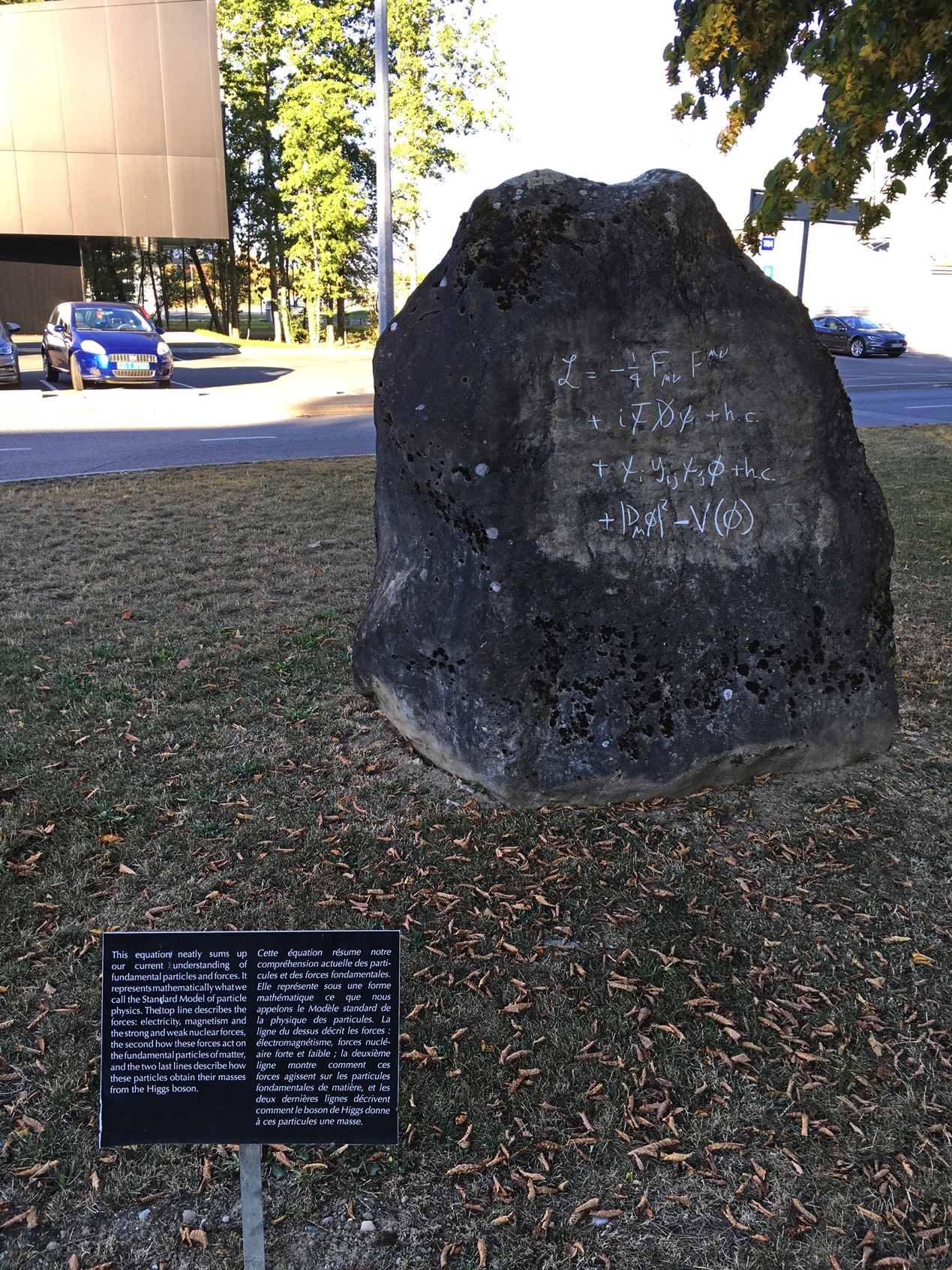Monday, 22 August
8am: Yet another early morning after a late night. I am getting too old for this (some would disagree with the “getting”). The shifters this morning are the same as those from yesterday morning, who were unfortunate in that there was no beam throughout their shift. They were more fortunate today as the beam was on. But our data acquisition system was not in such good shape. In the middle of the night the system had stopped working. A Windows-based laptop that controls part of the system seemed to have spontaneously rebooted itself!
A few frantic phone and Skype calls later to one of our experts – who also happens to be responsible this week for the operation of the CMS Electromagnetic Calorimeter, and was getting even less sleep than me – and the system was up and running again. A feature of the Windows systems at CERN is that updates to the OS and applications are centrally managed. These updates happen at a “convenient” time – in the middle of the night. Normally OK, but not for a critical PC running a software application in a beam test. We will have to fix this…
1pm: Tired. Too tired for lunch. Went home and slept for a couple of hours, then some quick pasta and back to the beam-area for the 4pm change of shifts. The new shifters were French and Russian – both employed by Taiwanese institutes. Then back to the Meyrin site for a meeting of the Steering Group of the HGCAL (the detector system we are working on). These weekly meetings set the scene for the coming weeks, ensuring the focus of the collaboration is optimum. Even though the full-scale construction of this detector is about five years away, and installation will happen only in about 2024, the time to develop such a complex object is extremely short. HGCAL will be the largest silicon-based calorimeter ever made, able to withstand the intense particle fluxes expected when the LHC is upgraded to the “High Luminosity LHC” (or HL-LHC) a decade from now. It will measure with high precision the incoming particles' energies, positions and arrival time. HGCAL will replace three existing devices that, although performing extremely well, will not be able to survive the much harsher conditions in the HL-LHC. It is an unprecedented challenge involving hundreds of people from all over the world. Beam-tests such as this are crucial for tuning the design and ensuring that HGCAL will perform as expected.

7pm: Time for something different – Taekwondo training in a park in Geneva with some people from CERN (including the esteemed editor of the “Cylindrical Onion”!) and many others from the Geneva region. Lots of fun and a welcome break from the beam test. Of course, the shifters did not have this luxury and were busy taking data, following a short interruption when the accelerator complex was not functioning for a couple of hours.

11pm: Back at the beam area. We decided to focus the overnight run on taking a lot of data – about 170,000 events – with the highest-energy electrons that we can achieve in this beam line: 250 GeV. This should help us understand in detail some subtle features of the signals in the sensor due to showers of particles from these electrons.
On the way to the beam area I again had a close encounter with a deer, which was quite literally caught in my headlights! (Well, not quite – I wasn’t driving on the field.)

Tuesday, 23 August
8am: The night was uneventful – which is always a good phrase to start the day with! Everything worked as planned and we had taken a lot of good data with high-energy electrons. Indeed the rest of the day was equally uneventful – we continued with smooth data-taking until midnight. No problems arose; everything worked as planned. The shifters, and other members of the team, concentrated their efforts on analysing data and making improvements to the data-acquisition and “data-quality monitoring” systems. This latter is very important, especially when data taking is restricted to a short period of time (a week or less). If we are “blind” to what is going on, we could just waste the time and end up with nothing. Fortunately we were never in that situation as all shifters were running quick analyses to verify in almost-real-time that the data were good. At midnight we again set a long run going, to collect a lot of data at a fixed energy.
The Prévessin site of CERN in France is less well known than its sister site on the other side of the border. But in addition to being home to a variety of mammalian wildlife it is also very close to the Jura mountain range. Although they look like “big hills” to the uninitiated, they are rather high. Indeed, many years ago a friend and I decided to walk to the top, in the middle of summer, with only a couple of litres of water between us. Three hours after starting we reached the top, turned round and ran down and cycled to the nearest swimming pool to cool off. The Jura are higher than any mountain in my native Britain! They also gave their name to the Jurassic era… the real-life Jurassic Park is on our doorstep!

In addition to the area used for beam tests (and some rather large experiments such as NA61 and NA62 – the “NA” signifying the “North Area” of CERN – you can Google the rest!) there are a couple of control centres on the site. The most famous is the CCC – the CERN Control Centre, where the accelerator complex is controlled. There is also the control room for an experiment called the Alpha Magnetic Spectrometer, or AMS, that is currently on the International Space Station. AMS is measuring the amount of antimatter in space, to try to understand why there appears to be so little of it around (fortunately for us!).

One final thing to note on the Prévessin site is an ancient obelisk that dates back about 14 billion years. Over time scientists have decoded the weird scribblings on it and determined that they are a mathematical representation of the particles and forces that we study at CERN! What a coincidence! Unfortunatey the caption placed in front of it does have a small error (higher-resolution image here). The first non-CERN person to figure out the error and send me a private mail will win a small prize.

Wednesday, 24 August
8:30am: Our data-taking period was over! It was far more successful than I expected it to be, thanks to the excellent team of people behind it. A few of us met at the beam area to move things out of the way of the beam, in preparation for the next setup to be installed by another group. But we left much of our equipment in the area, to continue to develop the data-acquisition system even in the absence of the beam. This is important as in a week from now we will start all over again, with another week of testing but this time with a much larger system: eight modules instead of just one.
12pm: Barbecue time! After a long week it is good to unwind with a lunch together. And one of the advantages in working in an international team is the variety of food that is brought along by the participants. After a couple of hours of rest it was time to clear up and go back to the lab/office to start to look in earnest at the data taken and prepare for the coming test. Let’s hope it goes as well as this one!

Previous entries in "Test-beam tales": Day 1, Days 2 and 3, Days 4 and 5
The views expressed in CMS blogs are personal views of the author and do not necessarily represent official views of the CMS collaboration.
